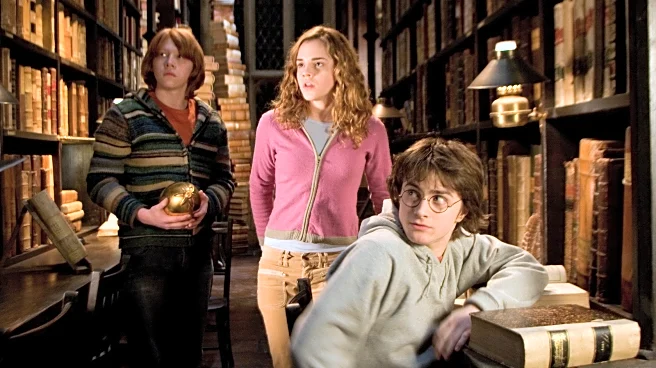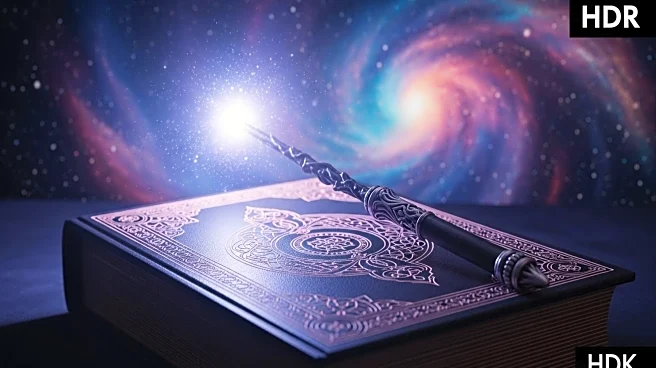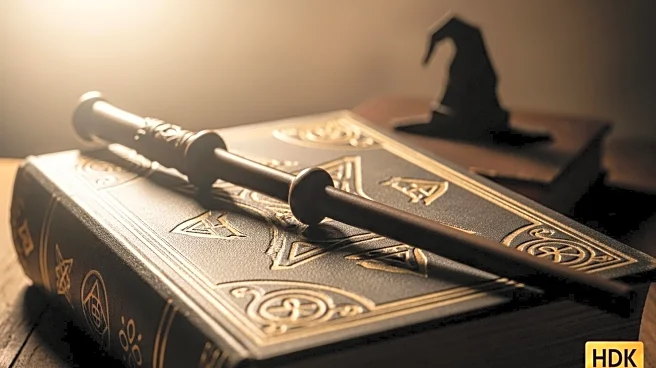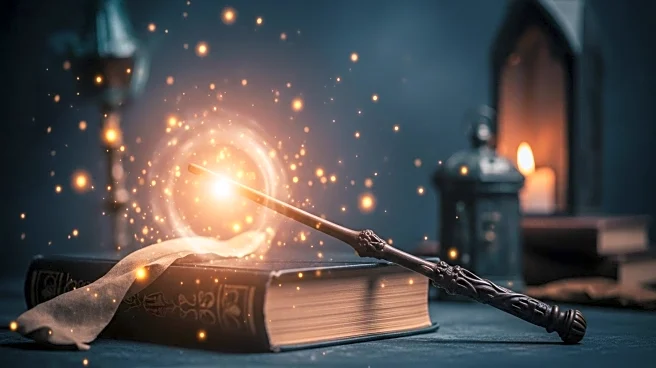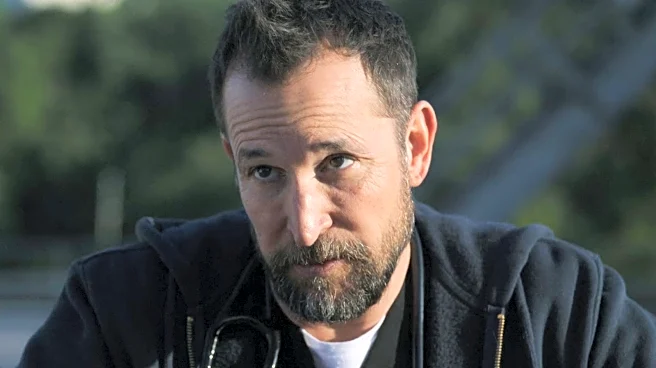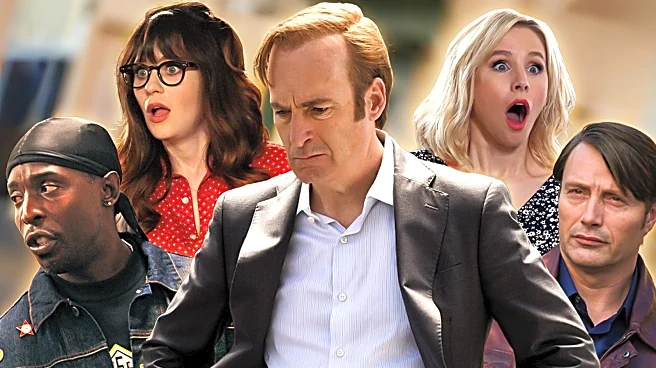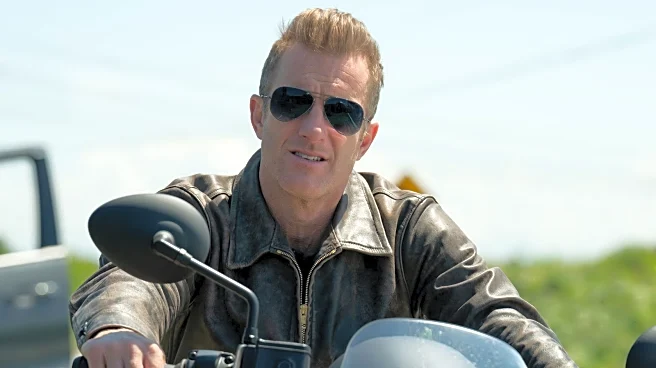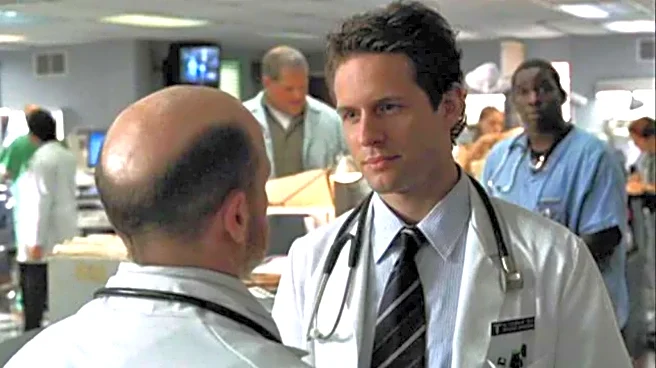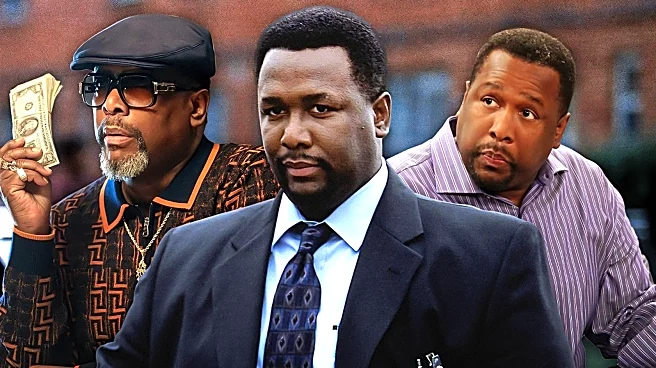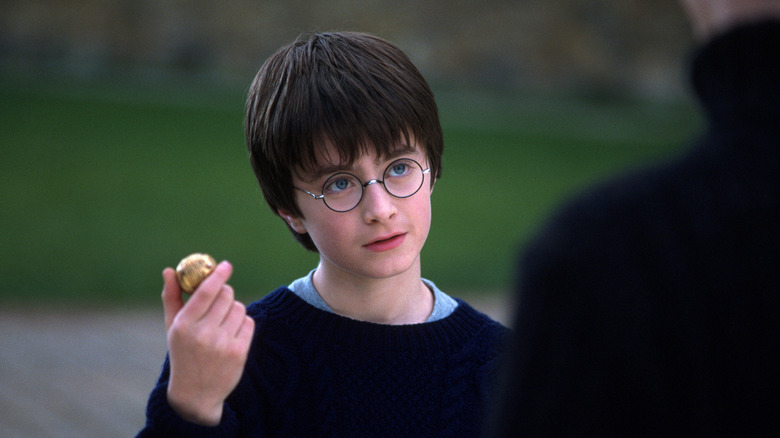
Adapting a book series to the big screen is probably a pretty daunting challenge. As much as I love to talk smack about just about every adaptation I've ever seen, I've never tried to do it myself, and I can only imagine that it's quite difficult. Mainly, it seems like picking scenes that make it into the adaptation is a huge struggle — especially when it comes to something like "Harry Potter," which spans eight movies (adapting seven novels and splitting the final one in two). According to director
Chris Columbus, who helmed the first two installments, there were two things in the very first "Harry Potter" movie that either weren't ever filmed or didn't make it into the final product. Now, he's hoping that HBO's forthcoming "Harry Potter" series might be able to fit them into the narrative.
"I'm not involved at all and I wish them great success," Columbus clarified to the Radio Times before saying that he thinks the series has the chance to do something really cool. "I think the best part of the series is the fact it's 10 hours for the first book, which we didn't have the opportunity to do. I'm a little envious," he admitted. "There was so much we couldn't put in the films -- they weren't short, they were over two and a half hours long, but I still struggled. It still keeps me up at night sometimes."
So what were the specifics? "I missed the fact that I was never able to put Peeves in the first film," Columbus revealed, referencing the poltergeist who, in the original novels, spends his time causing mischief at Hogwarts School of Witchcraft and Wizardry, the institution attended by the story's main trio Harry Potter, Ron Weasley, and Hermione Granger. (They were played by Daniel Radcliffe, Rupert Grint, and Emma Watson in the film series; on the TV show, they'll be played by relative newcomers Dominic McLaughlin, Alastair Stout, and Arabella Stanton.) Rik Mayall did film some scenes as Peeves for the film, but they were ultimately cut.
"Plus, there is a scene in the first book, 'Philosopher's Stone,' where Hermione and Harry are tasting potions in one of the challenges, and one of them could die at any moment," Columbus continued, referencing a scene during the story's big climax (and I'll return to that momentarily). "It's like this incredible chess match that we just did not have time to shoot. So hopefully those scenes will be reinstated. They have 10 hours. I hope they use them well." Columbus has a point — so how could the adaptation include moments like these?
Read more: The 15 Best 'So-Bad-It's-Good' Movies Of All Time
Two Important Aspects Of Harry Potter And The Sorcerer's Stone Were Cut During The Adaptation Process

Let's start with Peeves, who appears in nearly every "Harry Potter" movie and is conspicuously absent from the entire film franchise. Shortly after Harry, Ron, and Hermione get to Hogwarts and are sorted into one of four houses — they all end up going to Gryffindor, where "dwell the brave at heart" — they learn about Peeves, who is, again, a poltergeist, though he's actually one of five named ghosts that haunts the ancient castle. (Each House has a designated ghost; Gryffindor's house ghost Nearly-Headless Nick is played in the movies by John Cleese and Ravenclaw's ghost the Grey Lady is portrayed by Kelly Macdonald, for example.) Not only is Peeves an absolute menace and chaos monster who spends his time pelting people with chalk and destroying decorative suits of armor, but his antics tend to be inciting incidents for Harry and his friends. In the second book, "Harry Potter and the Chamber of Secrets," Harry is in trouble with the school's caretaker Argus Filch, played in the movies by David Bradley, when Filch is distracted by Peeves' antics, ensuring that Harry avoids a detention. It's easy to see why he got cut, but Peeves does make the world of Hogwarts that much fuller and richer.
As for the potion tasting challenge mentioned by Chris Columbus, that happens towards the end of "Harry Potter and the Sorcerer's Stone" (which, if you're watching or reading overseas, bears the subtitle "Philosopher's Stone"). After Harry, Ron, and Hermione learn that the titular stone, which can grant eternal life, is hidden within Hogwarts, they try to stop their Potions professor Severus Snape from getting to it, falsely believing that he's procuring it for the Dark Lord Voldemort. (Snape is played in the movies by the late Alan Rickman and will be played by Paapa Essiedu in the series; Voldemort only appears as a CGI creation in the first movie and has not been cast in the series as of this writing.) Ron is knocked out after winning a life-sized wizard chess game, so Harry and Hermione forge ahead and must solve a potions-based logic puzzle created by Snape himself. Hermione, a logical and brilliant witch, manages to figure out which of the seven potions will help Harry move forward and which will send her backwards to help Ron, but as she points out, most wizards don't have logic skills, so it's a terrific puzzle.
The HBO Harry Potter Series Has The Chance To Include A Lot Of Cut Material ... But Should It?
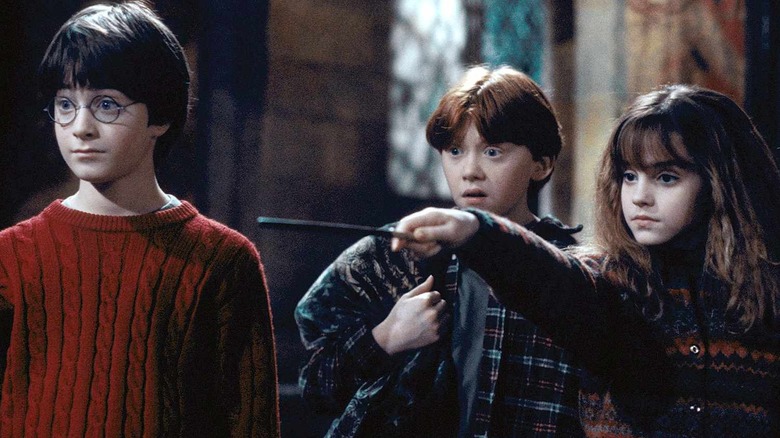
Because the intention behind the HBO adaptation of "Harry Potter" is that each book will be adapted into its own standalone season, Chris Columbus is correct that the showrunner, "Succession" veteran Francesca Gardiner, has the opportunity to include basically every aspect of the books. Should she, though?
For the first few books, I think you can easily throw in things like Peeves and the potions puzzle (which I do admittedly love and miss in the movie) back into the TV adaptation. One of the third movie's most glaring omissions, the origin of the Marauder's Map — a magical map that allows the user to see every coming and going in Hogwarts if they tell the scroll they "solemnly swear they're up to no good" — and the fact that it was created by Harry's own father can and should end up in the show's third season. This is where things start to get a little sticky, though! Series author Joanne "J.K." Rowling has come under fire since 2020 over her bigoted and cruel attitudes towards transgender people, especially transgender women, and some of her stranger and more offensive impulses do start showing up in the fourth book, "Harry Potter and the Goblet of Fire."
The most glaring issue here is the house-elves. After Hermione realizes that Hogwarts is fueled by the silent, unpaid work of hundreds of enslaved house-elves, she goes on a crusade to liberate them, only to be told that it would be "cruel" because the house-elves ... love their indentured servitude. Beyond a potential season 4 plotline that boils down to "this form of slavery is good because the slaves love it," there's also the issue of a paparazzo character named Rita Skeeter, who's played by Miranda Richardson in the movies. Rita, an evil character who traffics in gossip and lies, is almost constantly described as mannish and masculine in increasingly unflattering ways that encourage readers to dislike her — a writing impulse that takes on a new and disturbing aspect now that we know about some of Rowling's most divisive and infuriating views.
By all means, the "Harry Potter" series should include things that were left on the cutting room floor. No matter what, though, audiences are in for a wild ride. The original "Harry Potter" movies are streaming on HBO Max and Peacock now.
If you're looking for the easiest way to keep up with all the major movie and TV news, why not sign up to our free newsletter?
Read the original article on SlashFilm.
